Media | Articles
6 things you didn’t know about Chrysler’s turbine car
When Stephen Stills wrote “For What It’s Worth” in 1966, he was referring to a protest gone wrong, but the chorus could easily have been used by Chrysler’s experimental turbine-powered car program from 1964. A car with a jet engine? That sounds absurd.
Chrysler did build a small batch of turbine-powered cars, though, and a few became part of everyday life for a handful of lucky consumers. Even in a time when technology was advancing regularly, Chrysler’s turbine car pushed forward the automotive industry and the United States.
In June of 2022, the Hagerty Drivers Foundation (HDF) inducted the Chrysler Turbine into the federally recognized National Historic Vehicle Register. A year later, HDF has created a thorough documentary including interviews with experts on the turbine-car project, from engineers who were there from the start to collectors who have spent years chasing the few remaining Turbines.
We pulled out a few of the highlights from the documentary, which goes live today. If you like what you read here, the full video is embedded at the bottom of the article. Grab a cold drink, sink into a good chair, and give it a watch.
Everything started with Project A-86
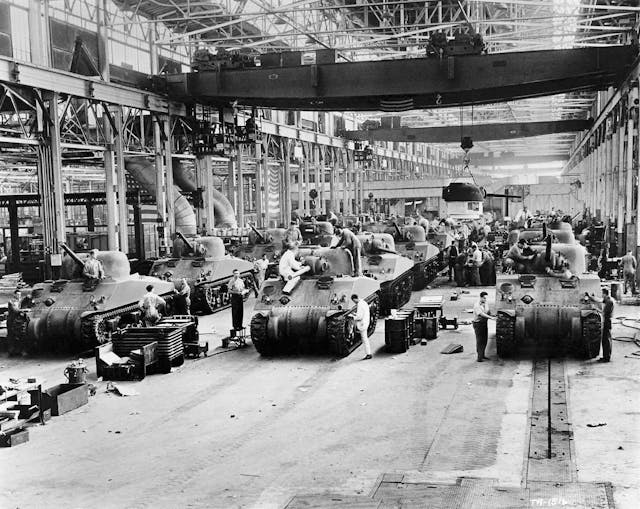
Just as WWII was ending, Chrysler finally finished a turboprop engine design codenamed A-86. Though jet engines made similar power to piston-powered ones, jet engines were far smaller and lighter, meaning that planes could be scaled up, perhaps even push right to the sonic barrier. When the need for aviation advancement became less urgent, Chrysler killed the project. Could we put the turbine engine in a car? the engineers wondered.
Marketplace
Buy and sell classics with confidence
Jet engines are incredibly space-efficient for a plane, but the turboprop didn’t immediately work in a car. The issues to solve were the same as you’d encounter when packaging any other powertrain: How to cool the engine, where to store the fuel, and which transmission to use.
It is not a jet car
A turbine-powered plane is pushed through the atmosphere by the force of the air exiting the turbine, or thrust. That wasn’t going to work well in vehicle traffic.
To make turbine power work on the streets, engineers added a second-stage turbine. Driven by the air coming out of the initial turbine, this second-stage unit also held a 10:1 gear reduction, which reduced the first turbine’s engine speed (40,000–50,000 rpm) to something a rear axle could accommodate. This second-stage turbine is the reason why the Chrysler is a turbine car, not a jet car.
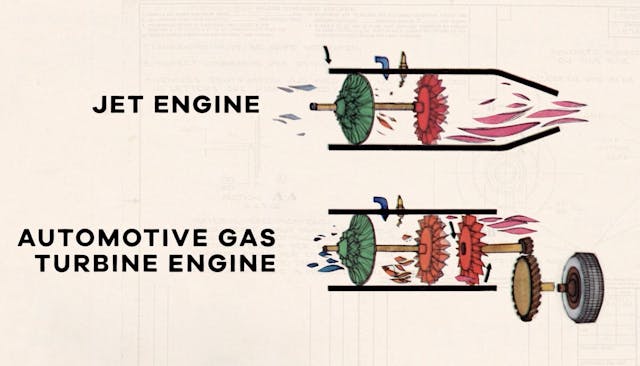
To make the Chrysler Turbine behave like users expected cars to behave, throttle response and fuel supply also had to be radically altered. What engineers did not have to deal with, though, was vibration. A turbine engine’s internal parts only rotate; they do not reciprocate.
It can run on just about anything combustible
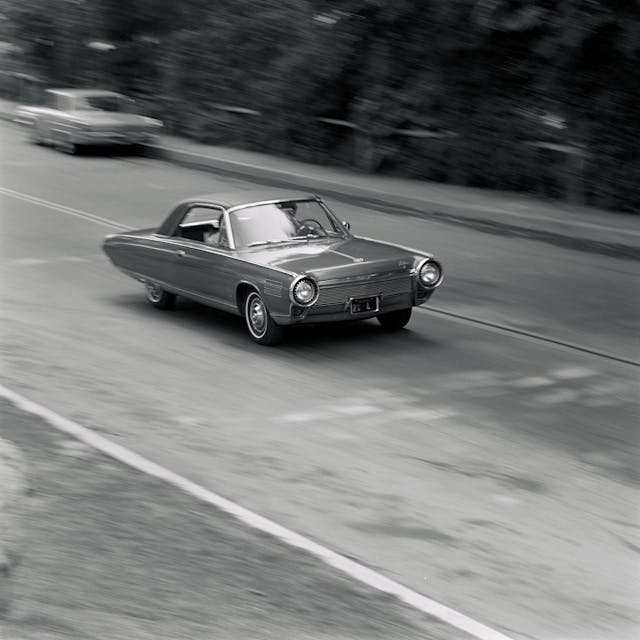
Unlike a piston engine, a turbine engine does not compress its fuel, so it can run on substances that would auto-ignite under compression or have trouble burning quickly enough for a short power stroke. Jerry Gross, one of the engineers from the Chrysler program, took one of the Turbine cars out to a peanut festival and fed it peanut oil. He said the car smelled like a restaurant kitchen but ran fine. Another story goes that, while in France, someone once ran the car on Chanel N°5. We would hate to see that bill …
Chrysler wasn’t the first to try turbine power

As early as 1949, Rover also had the idea to stuff a turbine powerplant under the hood of a car, so the post-war race to leave the piston behind became a match between the U.S. and England. Chrysler did not represent the U.S. alone: All the big auto manufacturers of the 1960s were experimenting with some type of turbine propulsion. It was Chrysler who went all-in, though, and created something more than a one-off show car. That investment made Chrysler’s efforts all the more memorable.

Real people got to drive them
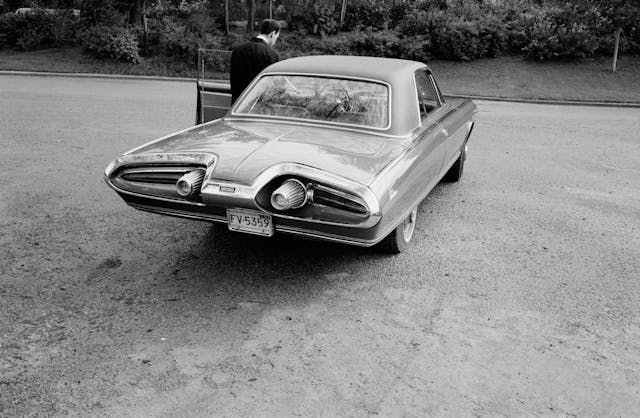
After the flurry of public relations stunts, in which Chrysler showed a few turbine cars at events across the country, the company took it up a notch by putting turbine cars in the garages of consumers. Not engineers. Not marketing people. Real-world users who lived with the car day in and day out for weeks at a time.
Engineers and designers can do a lot of testing, but those specialists think and drive differently than the average user does. Does the car have an adequate cooling system? Does it have the proper throttle response? How happily will it idle in traffic? All of these questions would normally be answered over months of testing, but Chrysler decided not to wait. In total, 203 lucky drivers got their own turbine car—Chrysler built 50—for three months. The cars were out in the wild, and people who paid attention could recognize one at a glance.
Not just bronze, Turbine Bronze
Chrysler didn’t really need the turbine cars to stand out visually, since the wild exhaust sound made it pretty obvious, but a little extra flair never hurt anybody.
The light-bronze color choice was safe enough to blend into ’60s traffic but unusual enough that the car would catch the public’s eye. The whole 50-car Turbine fleet wore this color. (Chrysler brought back Turbine Bronze in 2013 for a one-off 300C homage, but it wasn’t nearly the same.) The paint, the interior details, and the streamlined, jet-influenced silhouette all combined to be a subtle yet dashing car that is now forever documented as a critical piece of our automotive history.
***
Check out the Hagerty Media homepage so you don’t miss a single story, or better yet, bookmark it. To get our best stories delivered right to your inbox, subscribe to our newsletters.









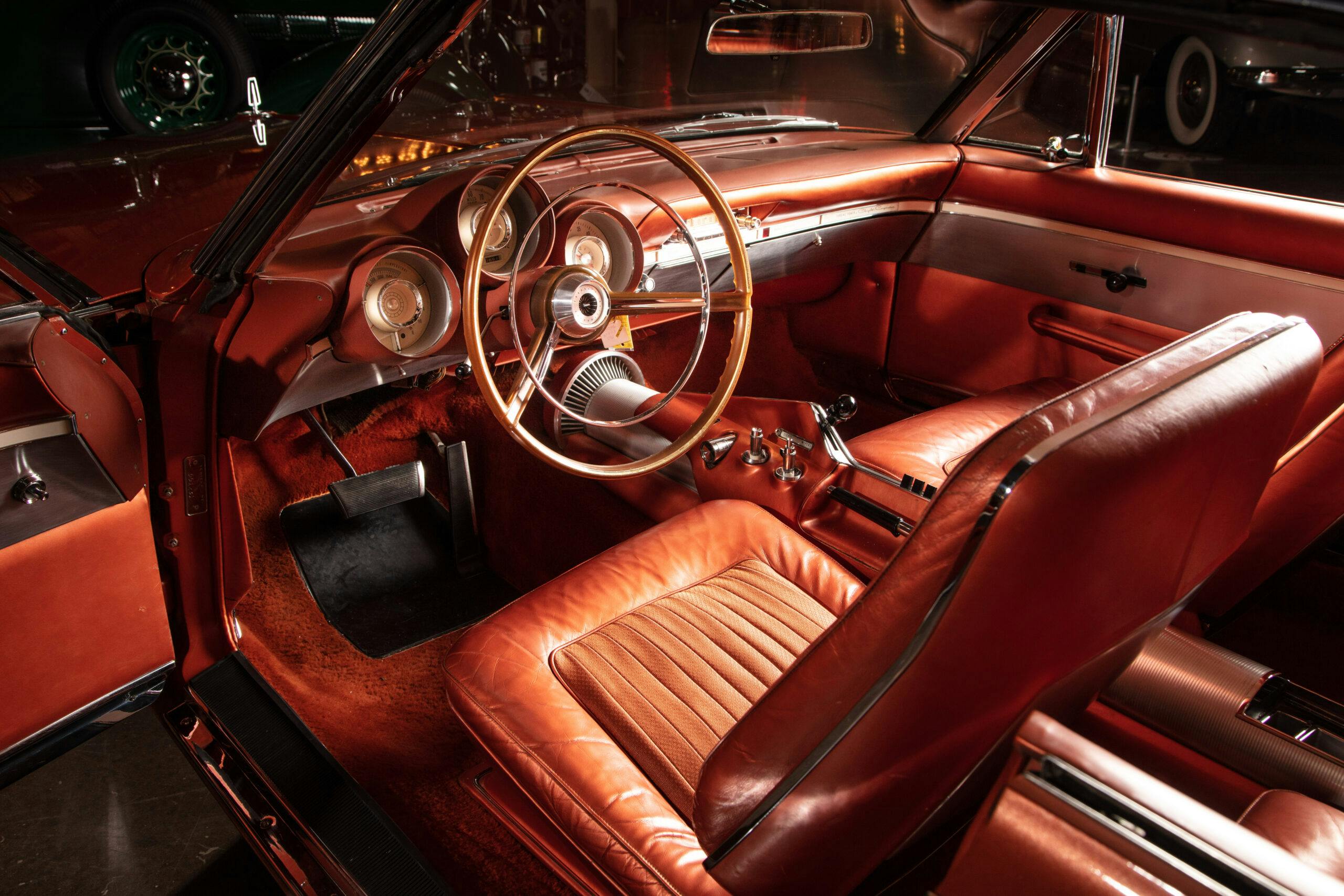
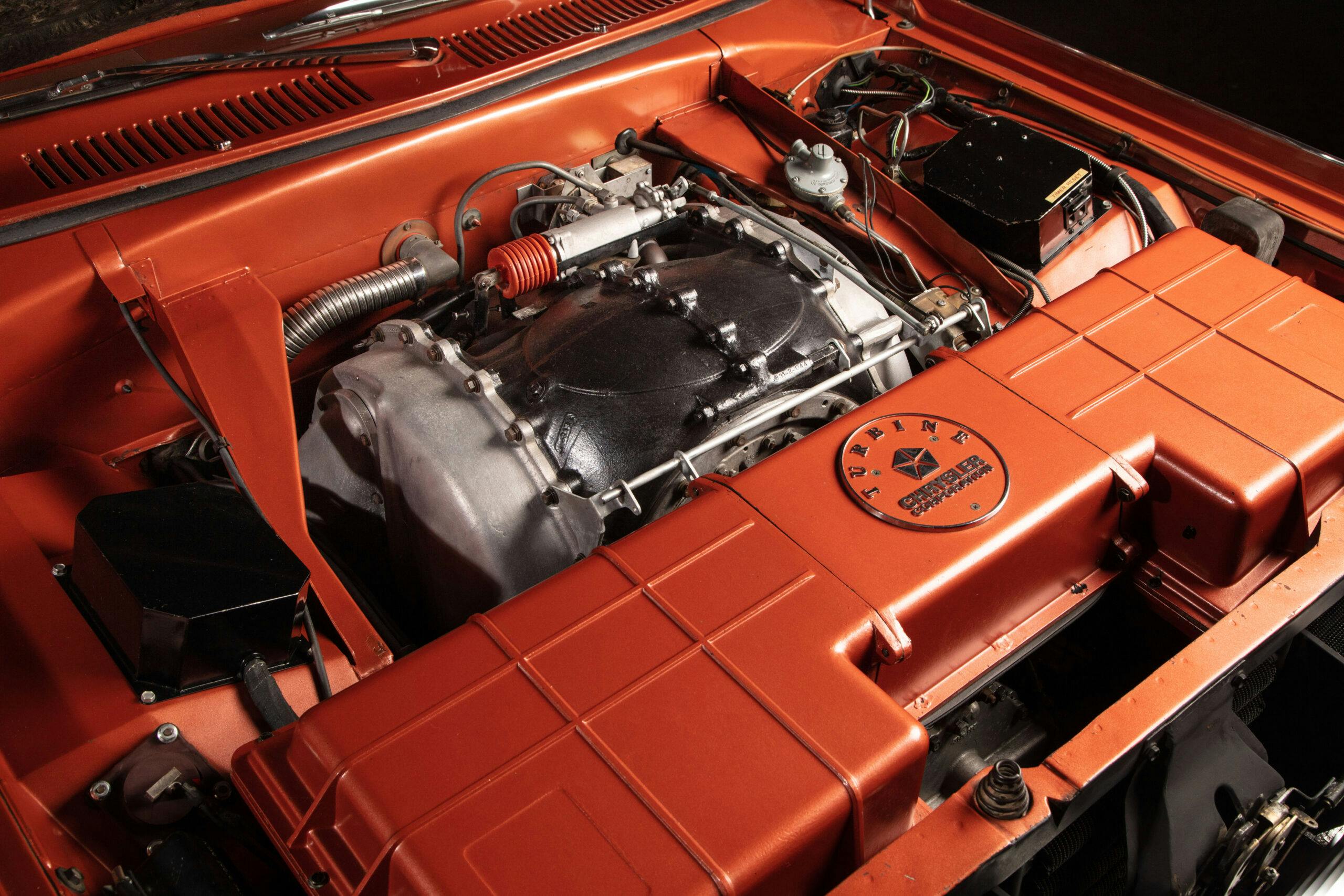








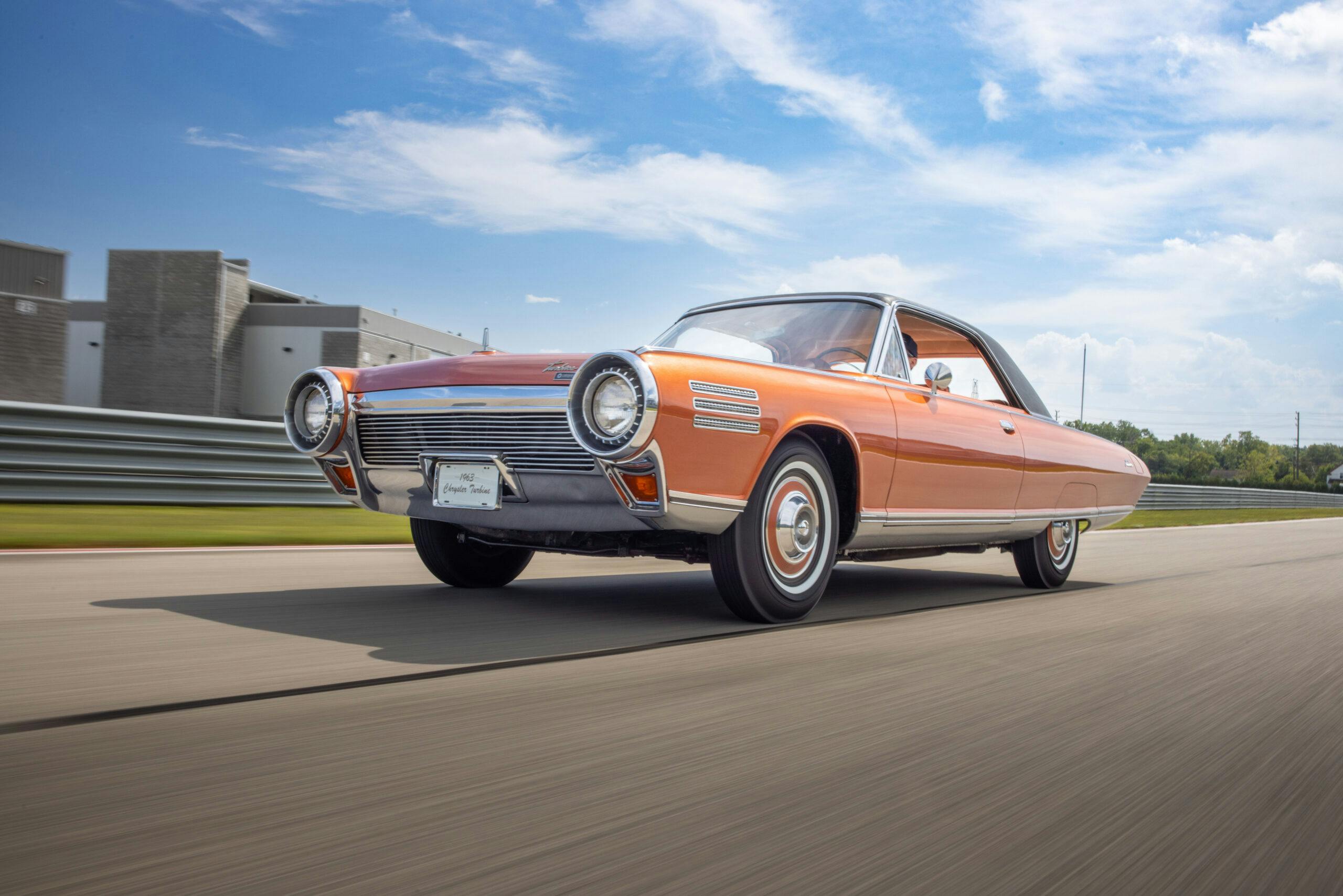
I was fortunate to have 2 chance encounters with turbine cars- once, in 1965, I was walking to grade school on the far NW side of Chicago when a turbine car came driving the street. Even though I was only 11 at the time, I was crazy about cars and recognized what it was immediately . My 2nd encounter was 25 yeas later at the big Hoosier auto show & swap meet in Indianapolis. I was walking down a swap aisle, came to an intersecting aisle and couldn’t believe what I saw- a turbine car – and it was moving my way! I just stood there in amazement until it got next to me and I could hear the unmistakable sound it made. I followed the car until the driver- Frank Kleptz – stopped the car in an open spot and got out. Talked to him for a half hour or so about how he saw it for sale (non running of course) at Hershey, ended up buying it, Jay’s part in persuading Chrysler to get him the need the engine parts, and the trials and tribulations of to getting to actually drive. I’ve since seen most of the other existent cars at their respective museums.
This was an absolutely fantastic video of a fantastic automobile.
Got to drive in one at The USN Gas Turbine Training Facility in Great Lakes Naval Training Center, ILL
I have to wonder if any of the engineers or others involved in the program managed to bring one home behind the company’s back… What would the chances of such a thing happening, and still remaining a secret?
Extremely good read ,I remember as a young man I saw a movie with I think Bobbie Darin racing the Chrysler Turbine ,can’t remember the movies name,looking it up now !
My neighbors father ran a Gulf gas station in Fanwood NJ. He got one to test drive for a week. I never got a ride in it. 🙁
Nothing new about driving a shaft from a turbine; it’s what all turboprop aircraft do. The advantages of the turbine engine are light weight and small size for the power produced, low vibration, and reliability. The disadvantages are very slow throttle response, the huge volume of very hot exhaust gas and horrible fuel economy (better at higher altitudes), but all three would afflict a turboshaft-powered car.
Other advantages are increased dependability and the ability to run on less volatile fuels than gasoline.
There was a plastic model kit of this back in the ’60s. I built it and it was one of my favorites in a collection of over 100. It was there for many years, until the entire collection was lost to the ages in the ’80s.
I think that Chrysler worked on the turbine for use in the tanks they developed and made for the US government. Just like the early Hydramatics were perfected by GM at the government’s expense during WW2 Chrysler had all sort of off shoot turbines they were working on with the goal to perfect one for tank use. The weight of a tank was perfect because it could easily break momentum when the throttle was released. To me it’s greatest asset for military use is it would “run on anything”. Amazingly the M1 Abrams battle tank has a turbine engine. Just connect the dots.
I well remember my father buying a 1963 Plymouth “Sports Fury” 2dr … metallic brown and beige… with a “slant 6”, push button automatic. Although that was his pride and joy, all he could talk about on the day he took delivery was the “turbine car”.
although that was
I was very luck to see and ride in one of the Turbine Cars !! My farter was a good friend of the VP of Chrysler and the owner of the local dealer, When the VP brought the Turbine to the dealer in my home town in Central PA, he brouht to my home to show my dad ahd the VPs dad, and I get to ride in it!! Will never forget that day !!
My farther !!! Good to have friend in the right places !!
As the above 7 year old indicated, the Chrysler exhibit at the 1964 Worlds Fair had a circular drive way, around it. People would sit and be driven in this car around the exhibit…….I was 18 and took the ride.
Back when Detroit had innovation. Today it’s Tesla.
growing up in Bellwood Illinois in the early sixties we hung out at the Holiday gas station on Manheim Road, every other day we would see the gold turbine car pull in for fuel, at first, we thought it was a customized Thunderbird, but it’s sound was unlike anything we ever heard before, judging by the frequency of gas station visits it must have gotten poor millage.
Was driving in Houston, Texas and turned the corner and there was this car sitting out in front of a barber shop. Got out to take a look and remember the was not running but still putting off heat. Beautiful and would love one if just for a hour/day/forever.